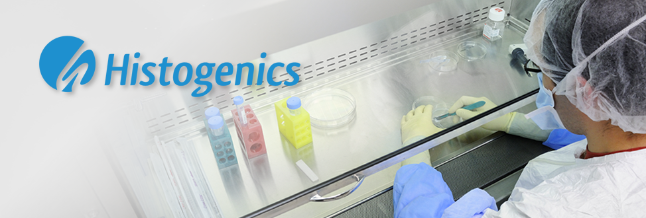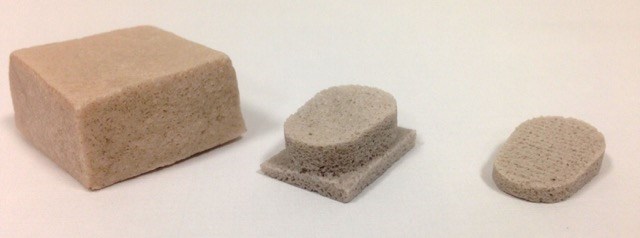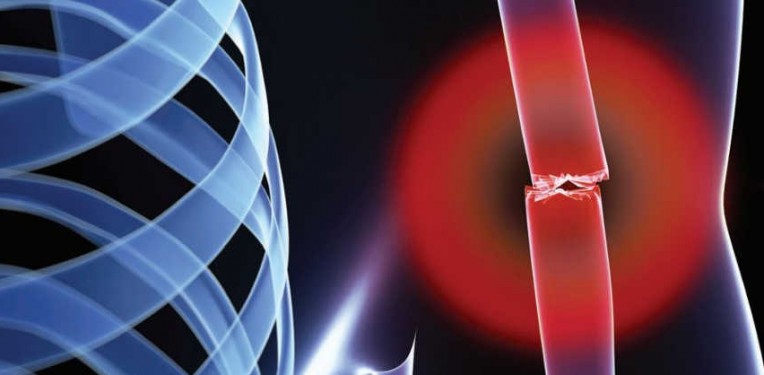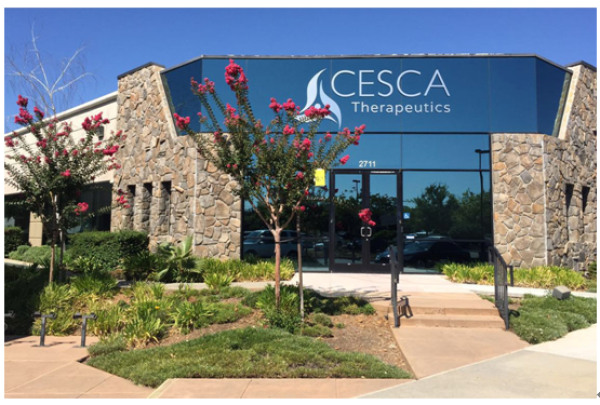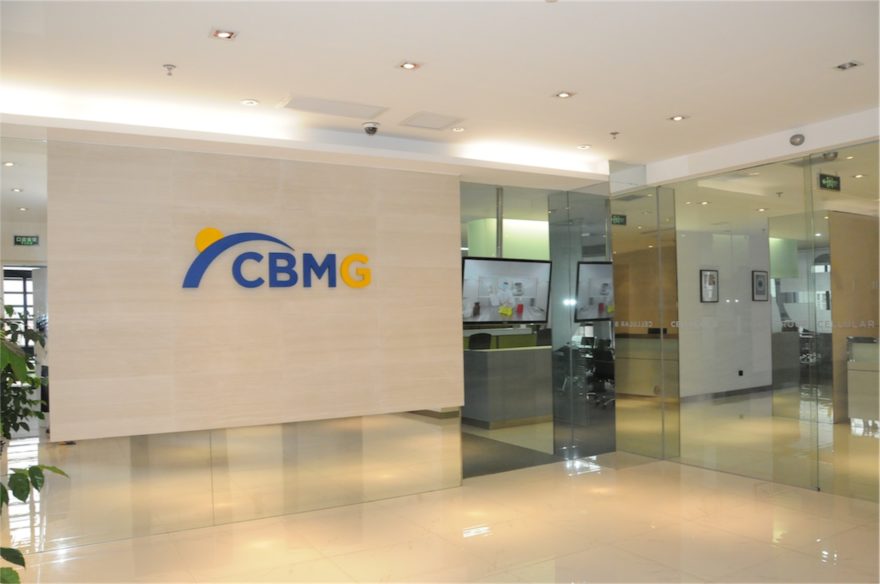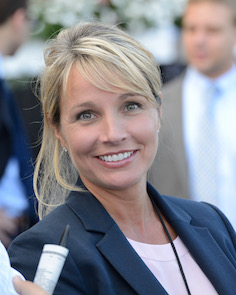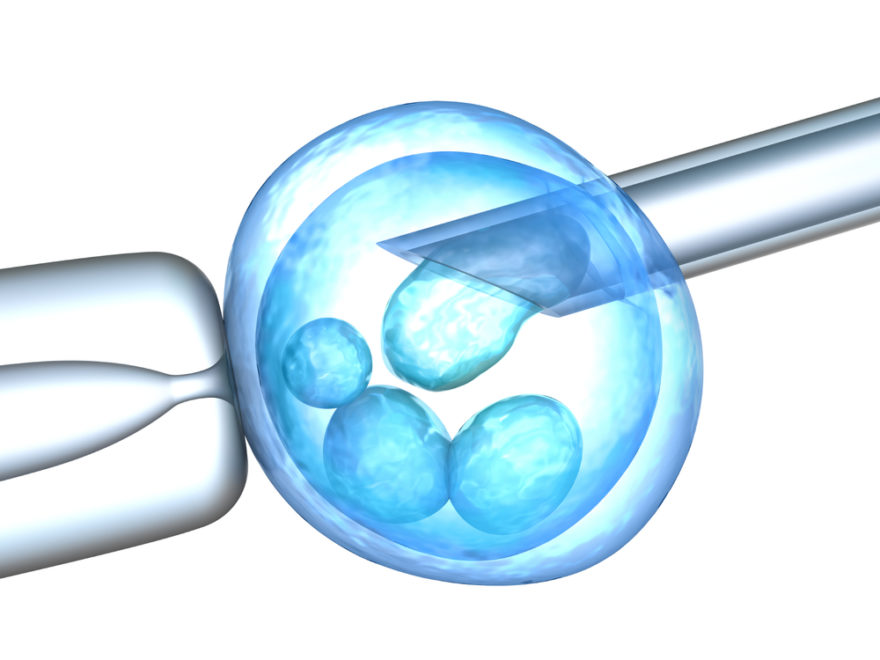WALTHAM, Mass., March 09, 2017 (GLOBE NEWSWIRE) — Histogenics Corporation (Histogenics) (Nasdaq:HSGX), a regenerative medicine company focused on developing and commercializing products in the musculoskeletal space, today announced the online publication in the Journal of Orthopaedic Research of a peer-reviewed publication entitled Mechanical Properties and Structure-Function Relationships of Human Chondrocyte-Seeded Cartilage Constructs After In Vitro Culture. The publication analyzes mechanical properties of tissue engineered cartilage based on work done as part of a sponsored research agreement between Histogenics and Dr. Lawrence Bonassar at Cornell University (Cornell). The initial data were presented at the Orthopaedic Research Society annual meeting in March 2016 and are based on a long-standing cooperative research agreement between Histogenics and Cornell. The lead author is Jill E. Middendorf (Cornell) with support from: Darvon J. Griffin, PhD, Itai Cohen, PhD and Lawrence J. Bonassar, PhD from Cornell and Sonya Shortkroff, Caroline Dugopolski, Stephen Kennedy and Joseph Siemiatkoski from Histogenics.
The objective of the study was to understand the complex mechanical behavior, function and changes that occur in human chondrocyte seeded collagen constructs during in vitro culture using multiple mechanical tests, which measure the compressive, frictional and shear properties of the constructs. This study was the first to examine the measurement of all three of these properties in human chondrocyte seeded constructs, and is intended to respond to U.S. Food and Drug Administration (FDA) guidance related to the generation of biomechanical or structural data for cartilage implants.
“We are excited to continue building our scientific understanding of the hyaline cartilage like properties of our tissue engineered product, NeoCart, and intend to use the data from these tests to support the Biologics License Application for NeoCart,” said Stephen Kennedy, Chief Technology Officer of Histogenics. “The data generated in this study provide additional evidence of the importance of the combination of cells, engineering and scaffold to produce mechanically competent cartilage tissue implants with additional unique friction and compression properties that allow for proper function in vivo. NeoCart’s unique ability to generate these characteristics prior to implantation is important, and we believe correlates nicely with the recently published clinical pain and functional data from the combined Phase 1 and 2 clinical trials for NeoCart. Taken together, these results may indicate that tissue engineered implants, such as NeoCart, may enable a more rapid recovery and return to function for patients suffering from cartilage defects,” continued Mr. Kennedy.
While all mechanical properties of human, tissue engineered, cartilage constructs nominally improved with time, frictional properties approached native values by three weeks and compressive properties approached native values by seven weeks. The results of the study suggest that in vitro cartilage constructs, or tissue implants, produced using a process that is designed to mimic that of NeoCart® exhibited mechanical properties prior to implantation approaching such properties of native cartilage. Specifically, the results of the study indicate that a combination of cells, scaffold and engineering play an important role in the development of tissue engineered-cartilage implants, such as NeoCart, and the maturation of such implants, leads to improved biological and mechanical properties. Together, these attributes may enable the early response and repair of focal cartilage lesions and the results of this study are consistent with data seen in patients in the Phase 1 and 2 clinical trials of NeoCart.
“Cartilage is a unique and difficult tissue to repair or regenerate. This challenge is evident from the many approaches to cartilage repair that include cells and scaffolds,” stated Dr. Lawrence Bonassar, Professor at Cornell University in the Meinig School of Biomedical Engineering and the Sibley School of Mechanical and Aerospace Engineering. “The data from this study confirm prior observations by scientists and surgeons that different mechanical properties of tissues improve at different rates. For example, frictional properties appear to improve quickly, while shear properties improve more slowly. These data are valuable not only for comparison to the performance of native tissue, but also in directing attention towards the properties that still need improvement,” continued Dr. Bonassar.
The full peer-reviewed publication will be available in the Investor Relations section of the Histogenics website once the final article is released for publication.
About NeoCart
NeoCart is a cartilage-like, tissue engineered implant created from a patient’s own cartilage cells. The patient’s cells are multiplied in Histogenics’ laboratory and then infused into a proprietary scaffold to allow them to organize and function like cartilage cells. Before NeoCart is shipped to the surgeon for implantation, the cell and scaffold construct undergoes a bioengineering process that is designed to mimic a joint so that the implant, upon placement in the knee with a proprietary bioadhesive, is primed to begin functioning like healthy cartilage. NeoCart is currently in a Phase 3 clinical trial that is designed to evaluate the safety and efficacy of NeoCart as a first-line therapy for full thickness knee cartilage defects in skeletally mature adults ages 18 to 59 and to show superiority of NeoCart against the current standard of care, microfracture. Histogenics is conducting the trial under a Special Protocol Assessment with the FDA and expects to complete enrollment in this trial by the end of the second quarter of 2017.
About Histogenics Corporation
Histogenics is a leading regenerative medicine company developing and commercializing products in the musculoskeletal segment of the marketplace. Histogenics’ regenerative medicine platform combines expertise in cell processing, scaffolding, tissue engineering, bioadhesives and growth factors to provide solutions to treat musculoskeletal-related conditions. Histogenics’ first investigational product candidate, NeoCart, is currently in Phase 3 clinical development. NeoCart is an autologous cell therapy designed to treat cartilage defects in the knee using the patient’s own cells. Knee cartilage defects represent a significant opportunity in the United States, with an estimated 500,000 or more applicable procedures each year. NeoCart is designed to exhibit characteristics of articular, hyaline cartilage prior to and upon implantation into the knee and therefore does not rely on the body to make new cartilage, characteristics not exhibited in other current treatment options. For more information, please visit www.histogenics.com.
Forward-Looking Statements
Various statements in this release are “forward-looking statements” under the securities laws. Words such as, but not limited to, “anticipate,” “believe,” “can,” “could,” “expect,” “estimate,” “design,” “goal,” “intend,” “may,” “might,” “objective,” “plan,” “predict,” “project,” “target,” “likely,” “should,” “will,” and “would,” or the negative of these terms and similar expressions or words, identify forward-looking statements. Forward-looking statements are based upon current expectations that involve risks, changes in circumstances, assumptions and uncertainties.
Important factors that could cause actual results to differ materially from those reflected in Histogenics’ forward-looking statements include, among others: the timing and success of Histogenics’ NeoCart Phase 3 clinical trial, including, without limitation, possible delays in enrolling the NeoCart Phase 3 clinical trial; the ability to obtain and maintain regulatory approval of NeoCart or any product candidates, and the labeling for any approved products; the scope, progress, expansion, and costs of developing and commercializing Histogenics’ product candidates; the ability to obtain and maintain regulatory approval regarding the comparability of critical NeoCart raw materials following our technology transfer and manufacturing location transition; the size and growth of the potential markets for Histogenics’ product candidates and the ability to serve those markets; Histogenics’ expectations regarding its expenses and revenue; and other factors that are described in the “Risk Factors” and “Management’s Discussion and Analysis of Financial Condition and Results of Operations” sections of Histogenics’ Annual Report on Form 10-K for the year ended December 31, 2015 and Quarterly Report on Form 10-Q for the quarter ended September 30, 2016, which are on file with the SEC and available on the SEC’s website at www.sec.gov. Additional factors may be set forth in those sections of Histogenics’ Annual Report on Form 10-K for the year ended December 31, 2016, to be filed with the SEC in the first quarter of 2017. In addition to the risks described above and in Histogenics’ annual report on Form 10-K and quarterly reports on Form 10-Q, current reports on Form 8-K and other filings with the SEC, other unknown or unpredictable factors also could affect Histogenics’ results.
There can be no assurance that the actual results or developments anticipated by Histogenics will be realized or, even if substantially realized, that they will have the expected consequences to, or effects on, Histogenics. Therefore, no assurance can be given that the outcomes stated in such forward-looking statements and estimates will be achieved.
All written and verbal forward-looking statements attributable to Histogenics or any person acting on its behalf are expressly qualified in their entirety by the cautionary statements contained or referred to herein. Histogenics cautions investors not to rely too heavily on the forward-looking statements Histogenics makes or that are made on its behalf. The information in this release is provided only as of the date of this release, and Histogenics undertakes no obligation, and specifically declines any obligation, to update or revise publicly any forward-looking statements, whether as a result of new information, future events or otherwise.
Contact: Investor Relations Tel: +1 (781) 547-7909

